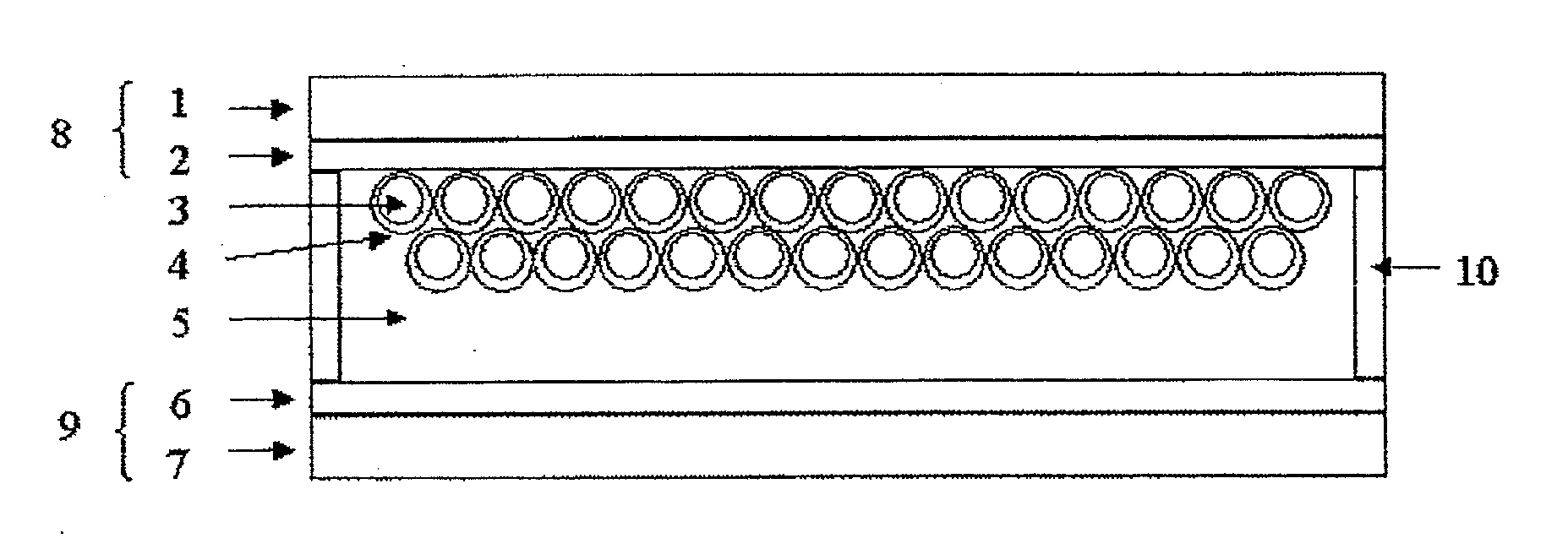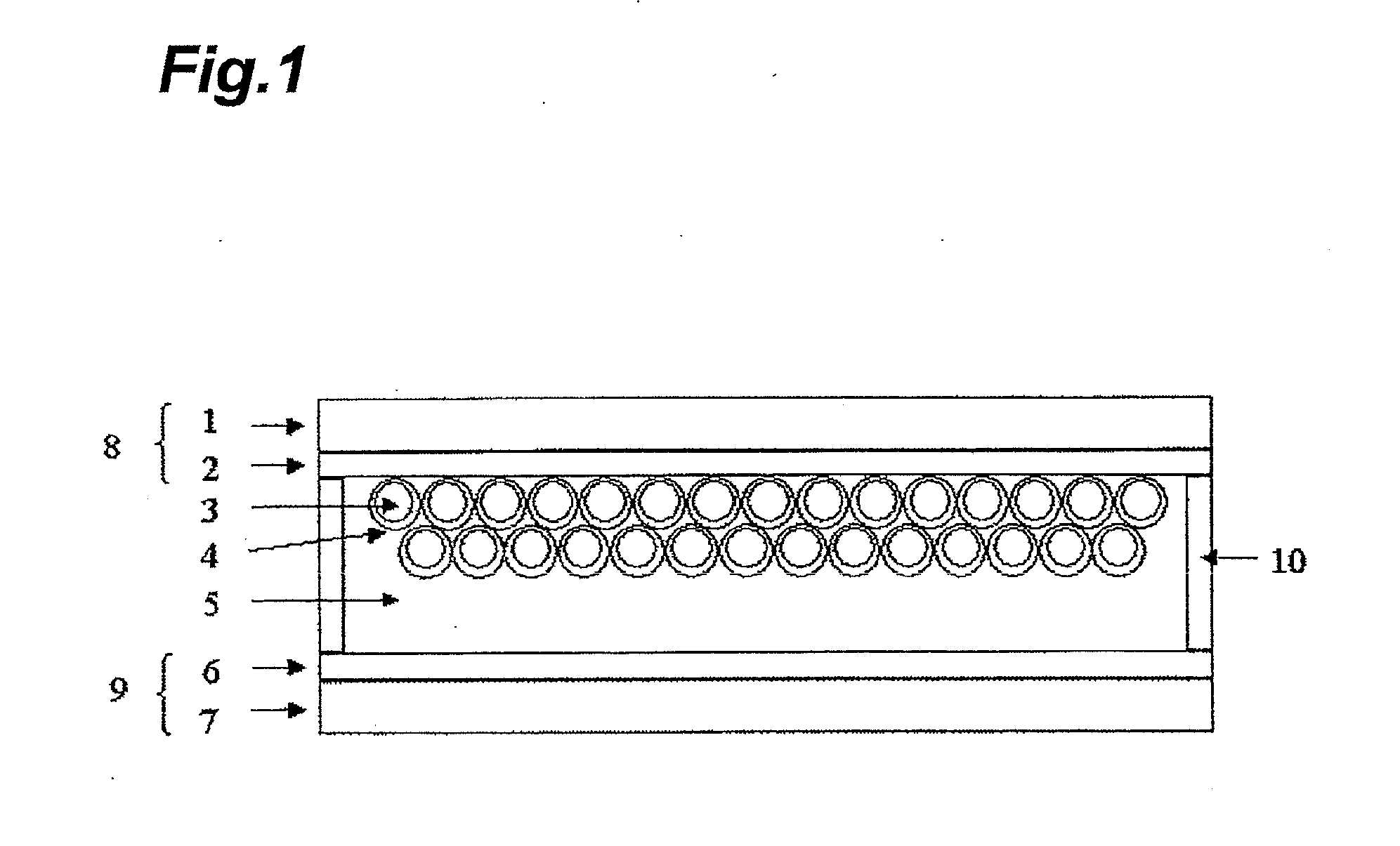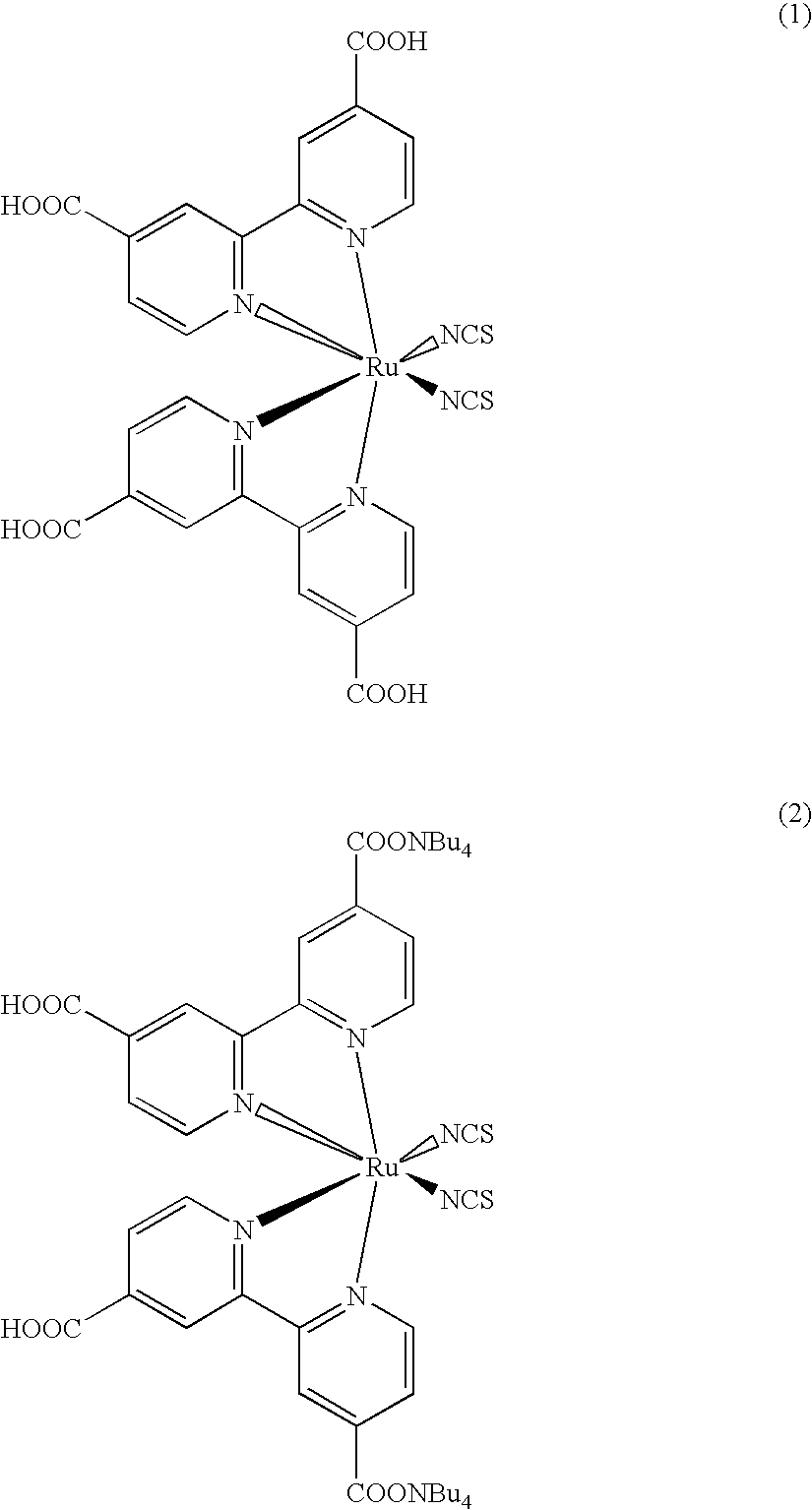Compound, photoelectric converter and photoelectrochemical cell
- Summary
- Abstract
- Description
- Claims
- Application Information
AI Technical Summary
Problems solved by technology
Method used
Image
Examples
example 1
Manufacturing Example 1
Manufacturing Example of Complex Compound (I-16)
[0228]Q-1 (1.95 g, 7.33 mmol) was dissolved in 55 g of 1,2-dichloroethane, followed by addition of manganese dioxide (4.29 g, 37.1 mmol) and reflux for 3 hours. After the reaction, the reaction mixture was filtered through celite and the filter cake was washed with chloroform. The filtrate was concentrated to obtain 1.03 g (yield, 49%) of Q-2 of 93.4% purity by HPLC. Then, to Q-3 (0.90 g, 1.77 mmol) was added 8.9 g of tetrahydrofuran and the mixture was ice-chilled. An n-butyllithium / hexane solution (0.5 ml, 0.80 mmol) was added dropwise over a ca. 10 minute period and the mixture was allowed to react for 1 hour at the same temperature. Thereto, a solution of Q-2 (0.90 g, 3.42 mmol) in 1 ml of tetrahydrofuran was dropwise added over a ca. 5 minute period
and was allowed to react at the same temperature for 2 hours, followed by warming to room temperature and stirring for 2 hours. After the reaction, the solvent wa...
example 2
Manufacturing Example 2
Manufacturing Example of Complex Compound (I-30)
[0237]To Q-8 (0.70 g, 2.07 mmol), obtained in the same manner as in Manufacturing Method 1 except that the reaction was carried out using Q-7 instead of Q-2, and a tin reagent XI-1 (1.29 ml, 6.21 mmol) and PdCl2(PPh3)2 (0.29 g, 0.41 mmol) were dissolved in 120 ml of 1,2-dimethoxyethane and the solution was refluxed for 1 hour. After the reaction, the solvent was distilled off under reduced pressure and the residue was dissolved in diethyl ether. The insoluble matter was removed by filtration, and from the filtrate, the solvent was distilled off to obtain tin compound Q-9. Then, to Q-9 obtained were added Q-10 (0.26 g, 1.03 mmol), PdCl2(PPh3)2 (0.29 g, 0.41 mmol) and 5 ml of toluene and the mixture was refluxed for 11 hours. After the reaction,
the solvent was distilled off under reduced pressure and the residue was purified by column chromatography to obtain 0.16 g (yield, 21%) of Q-11 of 81.6% purity by HPLC.
[023...
example 3
Manufacturing Example 3
Manufacturing Example of Complex Compound (I-25)
[0242]Q-12 (0.32 g, 1.23 mmol), XI-1 (0.16 ml, 0.49 mmol) and Pd(PPh3)4 (54 mg, 0.05 mmol) were dissolved in 5 ml of 1,2-dimethoxyethane and the solution was refluxed for 1 hour. After the reaction, the solvent was distilled off under reduced pressure and the residue was dissolved in diethyl ether. The insoluble matter was removed by filtration, and from the filtrate, the solvent was distilled off to obtain Q-13.
[0243]Then, to Q-13 obtained was added Q-8 (0.13 g, 0.39 mmol), PdCl2(PPh3)2 (47 mg, 0.07 mmol) and 5 ml of toluene, and the mixture was refluxed for 11 hours. After the reaction, the solvent was distilled off under reduced pressure and
the residue was purified by column chromatography to obtain 0.23 g (yield, 83%) of Q-14 of 65.7% purity by HPLC.
[0244]Subsequently, the obtained Q-14 was hydrolyzed in the same manner as in Manufacturing Method 1 to obtain II-25. The solid material obtained was confirmed to...
PUM
 Login to View More
Login to View More Abstract
Description
Claims
Application Information
 Login to View More
Login to View More - R&D
- Intellectual Property
- Life Sciences
- Materials
- Tech Scout
- Unparalleled Data Quality
- Higher Quality Content
- 60% Fewer Hallucinations
Browse by: Latest US Patents, China's latest patents, Technical Efficacy Thesaurus, Application Domain, Technology Topic, Popular Technical Reports.
© 2025 PatSnap. All rights reserved.Legal|Privacy policy|Modern Slavery Act Transparency Statement|Sitemap|About US| Contact US: help@patsnap.com



